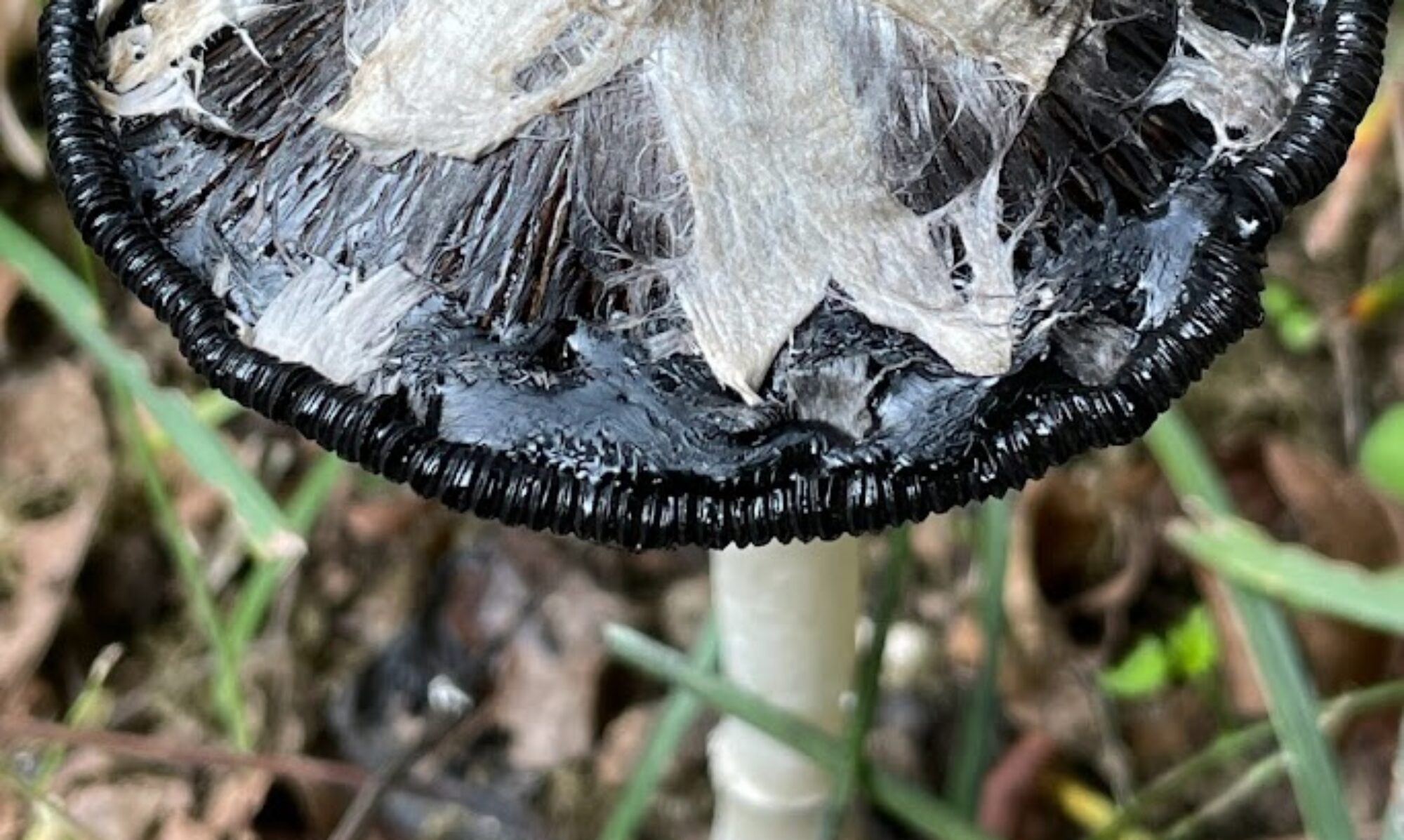Feng Cai, Ph.D
ORCID: 0000-0003-2032-6190
Current position: Postdoc
Tel.: +86 (0)25 84396825
E-mail: fengcai@njau.edu.cn
Address: Yifulou 5064, Weigang 1, Nanjing 210095, P.R. China
Research Gate
RESEARCH INTEREST
I am mainly working on fungal ecological genomics using Trichoderma spp. as the model for fitness, speciation, diversity, and evolution. Ubiquitously spread on land and ocean, fungi form one of the most diverse eukaryotic phyla with millions of species. However, the peculiarities of their biology such as their pleomorphic life cycles with a frequent prevalence of asexual reproduction, prolonged stages of dormancy, and superior metabolic plasticity impede studies on fungal evolution and ecology, leaving this group largely unexplored. On the other hand, the unique fungal traits can shed light on the evolutionary forces that shape their environmental adaptions. Filamentous fungi that disperse through aerial spores produce unique amphiphilic and highly surface-active proteins, hydrophobins (HFBs), which coat spores and mediate a multitude of environmental interactions. We recently exploited a library of hfb-edited mutants for closely related Trichoderma species and the HFBome in this fungus at a genus-wide level. The results pointed fungal HFBs are linked with their fitness that addresses fungal development, reproductive potential, and stress resistance. And the net contribution of such genes to fitness was found to result from the evolutionary tradeoff between individual effects. In parallel, the question of how spores get coated by such a huge HFB matrix on their surface also raised the interest of our research. Using the HFB-enriched mold Trichoderma and the HFB‐free yeast Pichia pastoris, we found that HFBs tended to accumulate in lipid bodies (LBs). Subsequent internalization of such LBs in vacuoles resulted in the maintenance of turgor pressure in aerial hyphae which are seen as “conidia rings” on colonies. Besides, I am also interested in exploring the functional roles of other small secreted cysteine-rich proteins (SSCPs) playing in the complex environment called the “hyphosphere” that is created by the fungus itself.
RESEARCH KEYWORDS
Cerato-platanin (CP), DNA barcoding, Ecological genetics, evolution, fungal-bacterial interaction, fungal-plant interaction, fungal diversity, fitness, halotolerant microbes, hydrophobin (HFB), new fungus exploration, phylogeny, plastic biodegradation, saline agriculture, small secreted cysteine-rich proteins (SSCP), spore dispersal, soil microbiome, speciation, Trichoderma, WGS
PRESENTATIONS ON THE INTERNATIONAL CONFERENCES
(Talk) “Never shall those born to crawl, learn to fly: Evolutionary compromises between spore hydrophobicity and fitness in Trichoderma”. The 15th European Conference on Fungal Genetics (ECFG15), February 2020. Rome, Italy.
(Talk) “Hydrophobins influence fungal fitness by modulating spore dispersal and survival”, Session “Fungal spore: development, dormancy, and germination”. The 30th Fungal Genetics Conference, March 2019. Asilomar, CA, USA.
(Poster) “Unconventional secretion of hydrophobins by aerial hyphae resembles the autophagy and explains the conidiation landscape of Trichoderma colony”. The 30th Fungal Genetics Conference, March 2019. Asilomar, CA, USA.
(Poster) “Hydrophobins constitute the major part of the massive extracellular matrix of the conidiating Trichoderma colony and influence its fitness by modulating spore dispersal and survival”. The 30th Fungal Genetics Conference, March 2019. Asilomar, CA, USA.
(Poster) “Hydrophobins of Trichoderma guizhouense inhibit tomato defense system for successful colonization of rhizosphere”. The 13th European Conference on Fungal Genetics (ECFG13), April, 2016. Paris, France.
(Poster) “HFB8, the orphan-hydrophobin of Trichoderma guizhouense, is involved in mycoparasitism, surface growth and protects hyphae from fungicides”, The 14th European Conference on Fungal Genetics (ECFG14), February 2018. Haifa, Israel.
LANGUAGE SKILLS
Chinese Native
English Fluent
German Basic
LIST OF PUBLICATIONS
FIRST- AND CORRESPONDING-AUTHORED ARTICLES
Cai, F., Gao, R., Zhao, Z., Ding, M., Jiang, S., Yagtu, C., Zhu, H., Zhang, J., Ebner, T., Mayrhofer-Reinhartshuber, M., Kainz, P., Chenthamara, K., Bayram-Akcapinar, G., Shen, Q., and Druzhinina, I. S. Evolutionary compromises in fungal fitness: hydrophobins hinder the adverse dispersal of spores and challenge their survival. ISME J 14, 2610–2624 (2020). https://doi.org/10.1038/s41396-020-0709-0
Ding, M., Chen, W., Ma, X., Lv, B., Gao, R., Jiang, S., Zhao, Z., Cai, F.*, and Druzhinina, I. S. Emerging salt marshes as a source of Trichoderma arenerea sp. nov. and other fungal bioeffectors for biosaline agriculture. (in press, Journal of Applied Microbiology)
Gao, R., Ding, M., Jiang, S., Zhao, Z., Chenthamara, K., Shen, Q. Cai, F.*, Druzhinina I.S. 2020. The evolutionary and functional paradox of cerato-platanins in the mycoparasitic fungi. Applied and Environmental Microbiology 86:e00696-20
Cai, F., Pang, G., Li, R.-X., Li, R., Gu, X.-L., Shen, Q.-R., and Chen, W. 2017a. Bioorganic fertilizer maintains a more stable soil microbiome than chemical fertilizer for monocropping. Biology and Fertility of Soils. 53:861–872
Cai, F., Pang, G., Miao, Y., Li, R., Li, R., Shen, Q., and Chen, W. 2017b. The nutrient preference of plants influences their rhizosphere microbiome. Applied Soil Ecology. 110:146–150
Cai, F., Chen, W., Wei, Z., Pang, G., Li, R., Ran, W., and Shen, Q. 2015. Colonization of Trichoderma harzianum strain SQR-T037 on tomato roots and its relationship to plant growth, nutrient availability and soil microflora. Plant and Soil. 388:337–350
Li, R.-X., Cai, F., Pang, G., Shen, Q.-R., Li, R., and Chen, W. 2015. Solubilisation of phosphate and micronutrients by Trichoderma harzianum and its relationship with the promotion of tomato plant growth. PLoS ONE. 10:e0130081 (shared first authorship)
Cai, F., Yu, G., Wang, P., Wei, Z., Fu, L., Shen, Q., and Chen, W. 2013. Harzianolide, a novel plant growth regulator and systemic resistance elicitor from Trichoderma harzianum. Plant Physiology and Biochemistry. 73:106–113
CO-AUTHORED ARTICLES
Perez-Llano, Y., Rodriguez-Pupo, E.C., Druzhinina, I.S., Chenthamara, K., Cai, F., Gunde-Cimerman, N. et al. 2020. Stress reshapes the physiological response of halophile fungi to salinity. Cells 9.
Zhang, Y., Wang, X., Pang, G., Cai, F., Zhang, J., Shen, Z., Li, R., and Shen, Q., 2019. Two-step genomic sequence comparison strategy to design Trichoderma strain-specific primers for quantitative PCR. AMB Express 9: 179.
Zhang, J., Miao, Y., Rahimi, M.J., Zhu, H., Steindorff, A., Schiessler, S., Cai, F., Pang, G., Chenthamara, K., Xu, Y., Kubicek, C.P., Shen, Q., Druzhinina, I.S., 2019. Guttation capsules containing hydrogen peroxide: an evolutionarily conserved NADPH oxidase gains a role in wars between related fungi: The role of hydrogen peroxide in fungal wars. Environmental Microbiology.
Hatvani, L., Homa, M., Chenthamara, K., Cai, F., Kocsubé, S., Atanasova, L., Mlinaric-Missoni, E., Manikandan, P., Revathi, R., Dóczi, I., Iványi, B., Bogáts, G., Narendran, V., Büchner, R., Vágvölgyi, C., Druzhinina, I.S., Kredics, L. 2019. Agricultural systems as potential sources of emerging human mycoses caused by Trichoderma FEMS Microbiology Letters, in press
Jiang, S.-Q., Yu, Y.-N., Gao, R.-W., Wang, H., Zhang, J., Li, R., Long, X.-H., Shen, Q.-R., Chen, W., and Cai, F. 2019. High-throughput absolute quantification sequencing reveals the effect of different fertilizer applications on bacterial community in a tomato cultivated coastal saline soil. Science of the Total Environment. 687:601–609
Kubicek, C. P., Steindorff, A. S., Chenthamara, K., Manganiello, G., Henrissat, B., Zhang, J., Cai, F., Kopchinskiy, A. G., Kubicek, E. M., Kuo, A., Baroncelli, R., Sarrocco, S., Noronha, E. F., Vannacci, G., Shen, Q., Grigoriev, I. V., and Druzhinina, I. S. 2019. Evolution and comparative genomics of the most common Trichoderma species. BMC Genomics. 20
Druzhinina, I. S., Chenthamara, K., Zhang, J., Atanasova, L., Yang, D., Miao, Y., Rahimi, M. J., Grujic, M., Cai, F., Pourmehdi, S., Salim, K. A., Pretzer, C., Kopchinskiy, A. G., Henrissat, B., Kuo, A., Hundley, H., Wang, M., Aerts, A., Salamov, A., Lipzen, A., LaButti, K., Barry, K., Grigoriev, I. V., Shen, Q., and Kubicek, C. P. 2018. Massive lateral transfer of genes encoding plant cell wall-degrading enzymes to the mycoparasitic fungus Trichoderma from its plant-associated hosts. PLOS Genetics. 14:e1007322
Pang, G., Cai, F., Li, R., Zhao, Z., Li, R., Gu, X., Shen, Q., and Chen, W. 2017. Trichoderma-enriched organic fertilizer can mitigate microbiome degeneration of monocropped soil to maintain better plant growth. Plant and Soil. 416:181–192
Przylucka, A., Akcapinar, G. B., Chenthamara, K., Cai, F., Grujic, M., Karpenko, J., Livoi, M., Shen, Q., Kubicek, C. P., and Druzhinina, I. S. 2017. HFB7 – A novel orphan hydrophobin of the Harzianum and Virens clades of Trichoderma, is involved in response to biotic and abiotic stresses. Fungal Genetics and Biology. 102:63–76
BOOK CHAPTERS
Chenthamara, K., Rahimi, M., Grujic, M., Druzhinina, I. S. and Cai, F.* Trichoderma reesei – Methods and Protocols: Ecological genomics and evolution of Trichoderma reesei, Mach-Aignar, A., and Martzy, R., eds. Methods in Molecular Biology, Springer Nature (in press)
Rahimi, M., Cai, F., Grujic, M., Chenthamara, K., andDruzhinina, I. S. Trichoderma reesei – Methods and Protocols: Molecular identification of Trichoderma reesei. Mach-Aigner, A. and Martzy, R., eds. Methods in Molecular Biology, Springer Nature (in press)
Cai, F., Kubicek, C. P., and Druzhinina, I. S. Biofuels and Biodiesel: Genetic transformation of Trichoderma spp. Chhandak B., ed. Methods in Molecular Biology, Springer Nature (in press)


